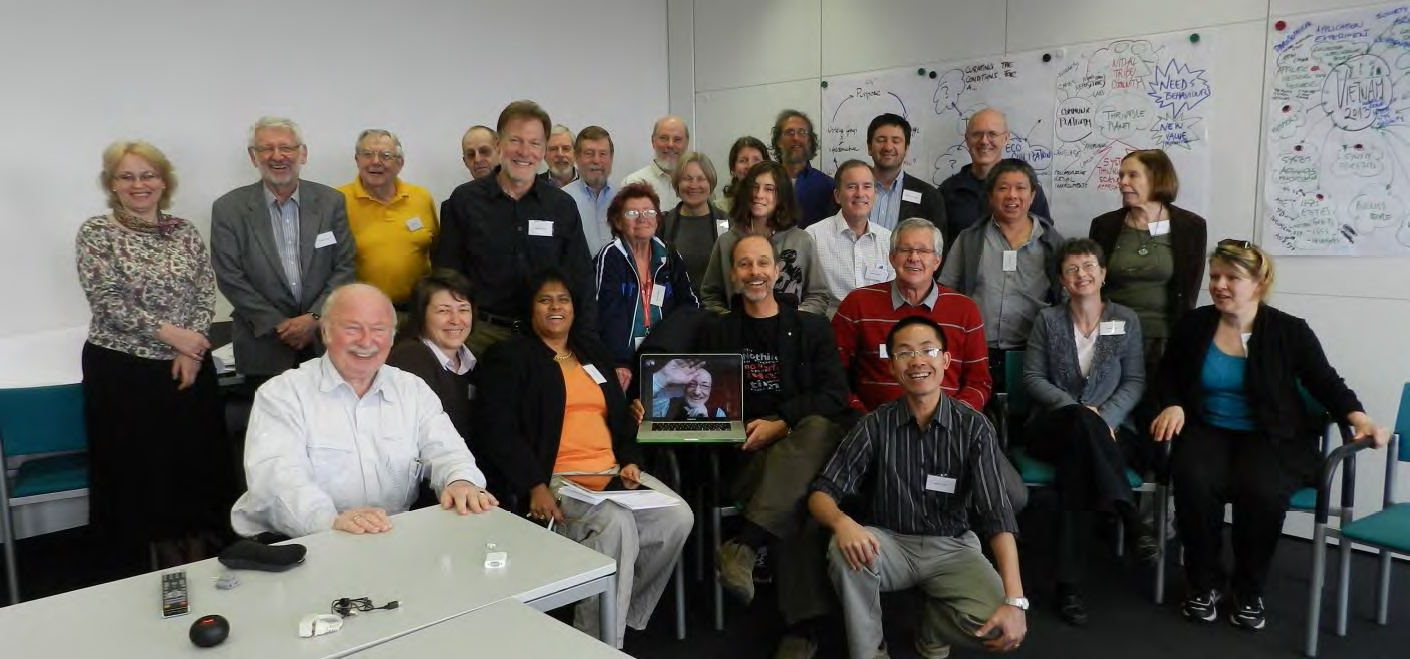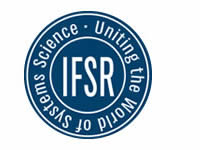
Seminar Hotel St. Magdalena, Linz, Austria, 2012
Proceedings of the IFSR Conversation 2012, St. Magdalena, Linz, Austria
Looking back at St. Magdalena 2012
Gary Metcalf , Gerhard Chroust
Conversations were introduced by Bela H. Banathy around 1980 as an alternative to the classical conferences which usually consist only of presentation of streamlined papers and short question slots. In a Conversation a small group of systems scientists and practitioners meets for several days to discuss in a self-guided way a topic of scientific and social importance. A Conversations is preceded by an intensive off-line preparation phase (including exchanges of ‘input papers’), followed by the face-to-face discussion at the Conversation and followed by a post-conversation consolidation period. No papers are presented during the conversation, the participants discuss face-to-face their topic, often modifying it in the course of the conversation (IFSR, 2010).
Since 1981 the IFSR has organized one IFSR Conversation every other year, originally in a hotel in Fuschl, near Salzburg (hence they were known as “Fuschl Conversations”). In 2010 we moved the Conversation to Pernegg, a small village nearer to Vienna in order to improve the ambiente. In 2012 we chose the Seminar Hotel St. Magdalena in the outskirts of Linz, Austria, resulting in an even better enviroment for the conversation. Additional Conversations were organized by IFSR’s member organisations in many locations around the world. In total approx. 50 Conversations were held up to now.
These proceedings include reports from the four teams which participated in the 2012 IFSR Conversation. The overarching theme this year was Systems and Science at Crossroads, which reflects the individual work of each team in different ways.
Team 1 explored the roots and the heritage left by the Tavistock Clinic, and later the Tavistock Institute. Members of Tavistock influenced the study of human systems in many ways, challenging assumptions based in traditional science. While work directly stemming from the Tavistock legacy continues, interest in the underlying principles, such as democratically-structured workplaces, can also be found emerging in new forms of organizations, continuing to challenge old assumptions.
Team 2 focused on what they termed Science II, an extension of traditional science which allows for inclusion of “the observer,” and properties such as emergence. Another way of describing this is “second-order science,” (in the same vein as “second-order cybernetics.”)
Team 3 dealt with issues which move beyond current concepts of sustainability, into notions of thriveability. Their work involved an active process of systems design, intended to link a series of international events related to these concepts. A focal point was the 2013 meeting of the International Society for the Systems Sciences in Viet Nam, being planned in partnership with a Living Labs project on Cat Ba Island.
Team 4 was comprised primarily of systems engineers, most connected with the International Council on Systems Engineering (INCOSE). The Conversation provided an opportunity for them to focus intently on the connections between systems engineering and systems science. This work is related to an ongoing project within INCOSE, as part of their Systems Science Working Group, and contributed directly to the Systems Engineering Book of Knowledge (SEBoK). It allowed not only focused time for the team members, but also discussions and collaboration with other systems scientists at the Conversation.
Together the four teams explored some of the boundaries and limitations of traditional approaches to science and organization. While each team’s work proceeded independently, the setting allowed for a great deal of cross-talk and informal exchange between participants and the four teams. Somewhat unique to this Conversation, also, was the intertwining of the Conversation with some of the participants’ work outside the Conversation. While the topics and team members were established for the Conversation itself, in all cases participants were involved in varying ways with prior efforts which fed into the work, and with continuing projects to which the work from the Conversation would be applied.
Short Summaries of the work of each team were published soon after the Conversation in the IFSR Newsletter from the summer of 2012 (Chroust, 2012a).
In this volume the official Team Reports are collected together with papers by individual participants supporting the team’s finding (Chroust & Metcalf, 2012b).
Additional material resulting from the Conversation which was too voluminous and/or too specialized to go into the proceedings were collected as a special supplement volume (Chroust & Metcalf, 2012c).
References:
Chroust, G. (ed.) (2012a) IFSR Newsletter, vol. 29 (2012), no. 1, IFSR – International Federation for Systems Research, Linz, and [http://archive-ifsr.org/newsletters].
Chroust, G. , and Metcalf, G. (eds.) (2102b) Systems and Science at Crossroads – Sixteenth IFSR Conversation, Inst. f. Systems Engineering and Automation, Johannes Kepler University Linz, Austria, SEA-SR-32, Sept. 2012 and [http://ifsr.ocg.at/world/files/$12m$Magdalena-2012-proc.pdf].
Chroust, G. , and Metcalf, G. (eds.) (2102c) Systems and Science at Crossroads – Sixteenth IFSR Conversation – Supplement Inst. f. Systems Engineering and Automation, Johannes Kepler University Linz, Austria, SEA-SR-32, Nov.2012 and [http://ifsr.ocg.at/world/files/$12n$Magdalena-2012-supp.pdf].
IFSR (ed.) (2010) Why Conversation and what form do they take? IFSR Newsletter, vol. 27 (2010), no. 1, p. 6 IFSR – International Federation for Systems Research, Linz, and [http://archive-ifsr.org/newsletters].

Some IFSR 2012 Conversation attendees. St. Magdalena, Linz, Austria

Countryside near St. Magdalena, Linz, Austria, 2012
